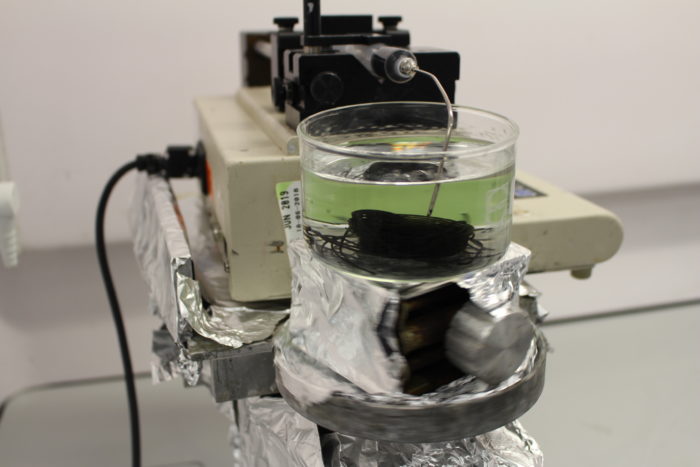News
3D printing bone tissue
Jun 28 2022
I heard a rumour I was referred to as Rumpelstiltskin the other day. I could see that may be attributed to the cultivated facial hair.

It turns out the comparison had less to do with that, and more to do with the ability to spin basic products into invaluable resources. For Rumpelstiltskin, he turned straw into gold. At the ARC Centre of Excellence for Electromaterials Science (ACES), we’re spinning graphene into medical research gold – all in a day’s work when the skills of our talented materials scientists and collaborating biologists are combined.
In one of the most exciting projects I’ve been involved in, the team from our University of Wollongong node in collaboration with researchers from the University of Texas at Dallas, have developed novel graphene fibres as a new electrical stimulation device that could replace the use of pharmaceuticals to treat a range of medical conditions.
The field of electroceuticals, where electrical stimulation is used to modify biological functions, has become a hot topic of research in recent years, given its potential to treat medical conditions with minimal invasion and side effects. Until now, metal electrodes have been used in electroceutical research, which are inflexible and can be damaging to the nervous system.
Driven by a need to develop more ‘body friendly’ fibres, the research team at our University of Wollongong node have developed the ‘sutrode’, which combines the electrical properties of an electrode with the mechanical properties of a suture.
We have used the traditional wet spinning fabrication method to manufacture this new style of fibre based on graphene, a form of carbon that is biologically friendly. Our sutrodes are half the diameter of a human hair, yet remain strong, flexible and maintain electrical properties, giving surgeons the ability to communicate with the nervous system in an unprecedented way.
Perhaps you’re asking ‘So what? What does this mean?’ Our collaborator at the University of Dallas at Texas Professor Mario Romero-Ortega tells us we have always known our vital organs like the pancreas, the liver, and the spleen all talk to one another, we’ve just never been able to listen. With our sutrode, we’ve developed a microphone that will help us understand the language of our organs, allowing us to compare a healthy organ to one that is suffering from a pathological condition, so we can learn more about how to effectively treat them without drugs.
It’s a bit like hacking an organ – we are for the first time understanding the activity that goes on in our organs and how they communicate, with the hope of eventually using the same sutrodes to control and stimulate aspects within our nervous system.
Now we’re talking to clinicians about applications for the sutrode and how it can be used to get damaged nerves to reconnect, or help nerves and muscles better communicate. Imagine being able to compare communications in a healthy body with those in a body that experiences epileptic seizures, and then use sutrodes directly to treat the condition.
At TRICEP (Translational Research Initiative for Cellular Engineering and Printing), our latest venture in 3D bioprinting, we are preparing to scale up our manufacture of discoveries like the sutrode so we can supply collaborators with our novel materials, devices and structures.
It’s work like the sutrode and our broad network of collaboration that will see preconceptions of the human body overwritten as we discover more about the human body than we ever knew.
If you would like to read more about the sutrode, please click here.













